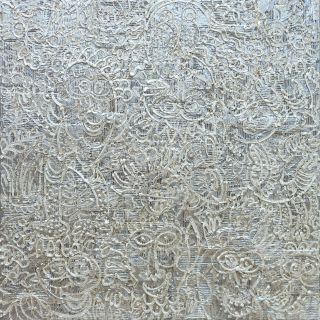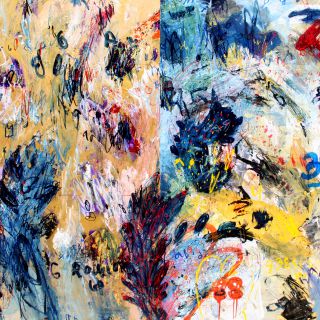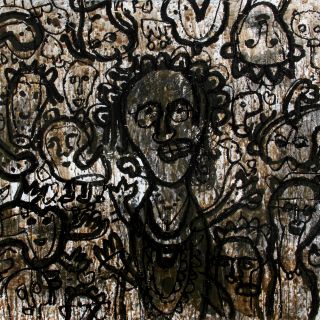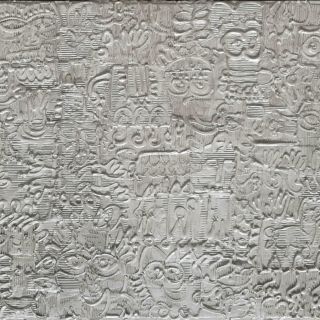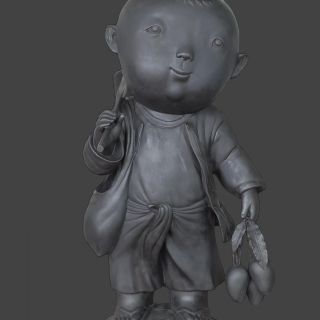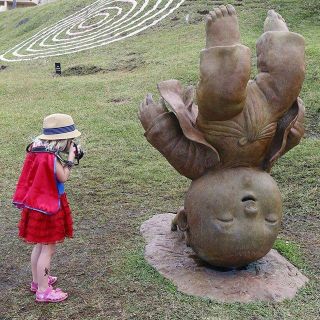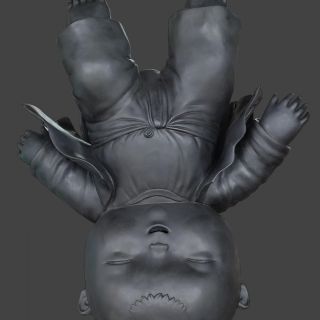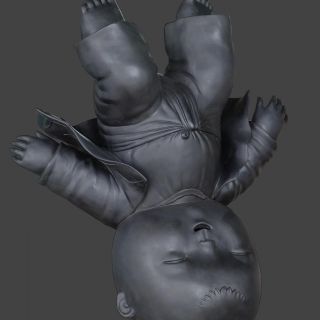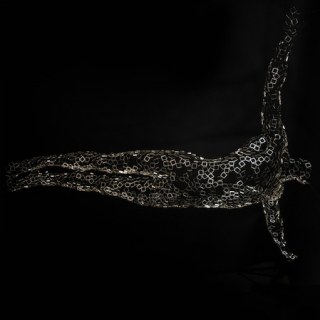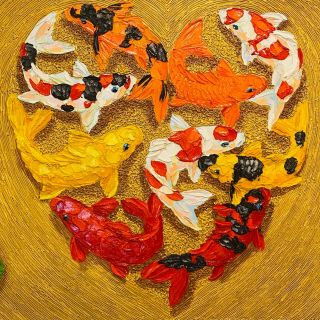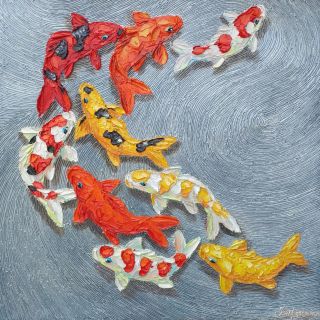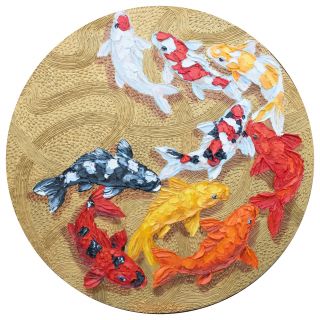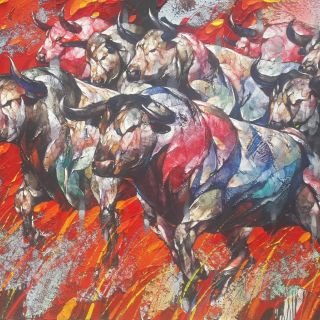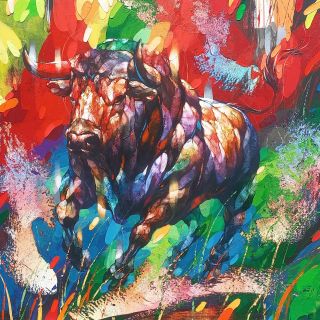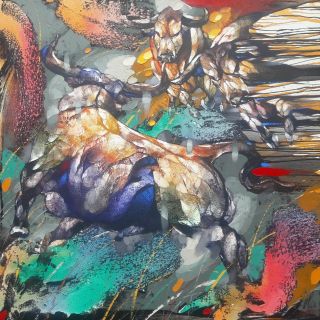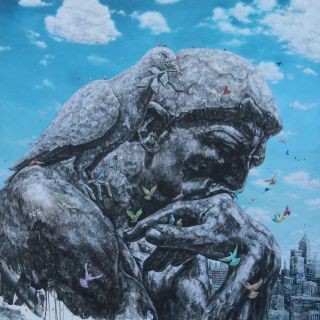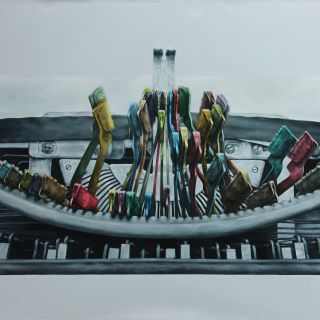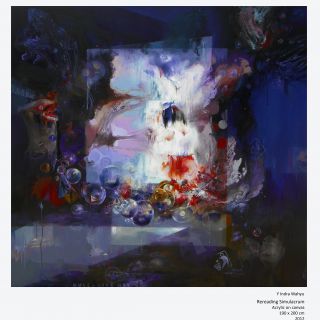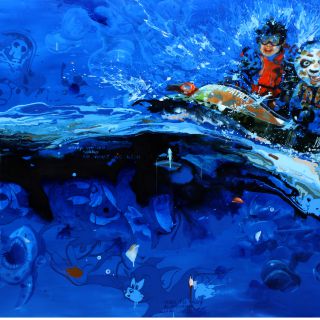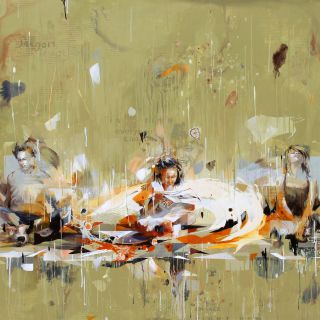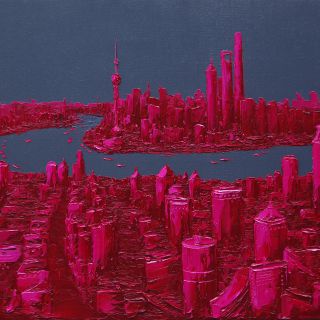
There are many who regard mainstream culture and the mass media with disdain, believing that the adoption of preferred attitudes and ideas is a symptom of a shallow, frivolous milieu. Yet there are others who are not so quick to pass judgement on the widespread disposition towards popular culture, instead taking it as a window through which we may gain insight into the very core of humanity's strengths and weaknesses. Syaiful A. Rachman is one such person. His paintings reveal his interest in the development of what some might flippantly term "mass culture," as this "mass culture" we often carelessly refer to is in fact more profound and complex than we might think. Prominent figures such as Elvis Presley, Andy Warhol and Marilyn Monroe recur in Syaiful's paintings. His particular fascination with these celebrities is derived from the conviction that they are the 'nodes' of various aspects - persona, popularity and even power, [all of] which are manifested in every human subject." These easily recognisable household names perhaps signify such traits in a more accentuated manner than the ordinary individual, hence explaining Syaiful's choice in making them the subject matter of his work. However, lest one be led to believe otherwise, Syaiful's focus is not only famous figures. Much of his art showcases his appreciation for the passion and ebullience of everyday characters as well.
Viewing 5 works by Syaiful A Rachman
Sort
Biography 
Biography
There are many who regard mainstream culture and the mass media with disdain, believing that the adoption of preferred attitudes and ideas is a symptom of a shallow, frivolous milieu. Yet there are others who are not so quick to pass judgement on the widespread disposition towards popular culture, instead taking it as a window through which we may gain insight into the very core of humanity's strengths and weaknesses. Syaiful A. Rachman is one such person. His paintings reveal his interest in the development of what some might flippantly term "mass culture," as this "mass culture" we often carelessly refer to is in fact more profound and complex than we might think.
Prominent figures such as Elvis Presley, Andy Warhol and Marilyn Monroe recur in Syaiful's paintings. His particular fascination with these celebrities is derived from the conviction that they are the 'nodes' of various aspects - persona, popularity and even power, [all of] which are manifested in every human subject." These easily recognisable household names perhaps signify such traits in a more accentuated manner than the ordinary individual, hence explaining Syaiful's choice in making them the subject matter of his work. However, lest one be led to believe otherwise, Syaiful's focus is not only famous figures. Much of his art showcases his appreciation for the passion and ebullience of everyday characters as well.
It is only upon more conscientious scrutiny of Syaiful's paintings that one might truly catch a glimpse of his artistic inventiveness. It becomes clear that his portraits are composed of hundreds - even thousands - of minuscule, faceless human figures. A peremptory glance at any of Syaiful's paintings is enough to trick the viewer into thinking that these diminutive people are nothing more than an exceptionally pronounced attempt at pointillism. The scrupulous inclusion of this anonymous crowd is not merely a clever contrivance, as it also serves as an analogy to the roots of popular culture. Amidst our glorification and idolatry of the sought-after crowd, it is easy to forget that it is the power of our favour that holds them aloft. Through his precise brushstrokes that emphasise just the right amount of colours and shadows in the appropriate places, Syaiful leads us to the realisation of the diverse distribution of power between and amongst people from all factions of society. In the virtual era full of information and imaging today, "the myth of mass culture" is increasingly finding its place in the dimension that exceeds reality. It could be a fact that "black" is the appearance of "white" - meaning that in this virtual era, appearances will all be presented as the opposite of authenticity and deprived of substance and depth.
If the purpose of a myth is merely to lure, whether in a visual or auditory manner, which ultimately cajoles and coerces an audience in terms of selecting, purchasing, and so on, then in the virtual era such as now, there is no such thing as truth; there is no reality but a mirage. This is why foresight is needed to uncover the myths that appear in various campaigns. Myths of mass culture are systems of communication that contain messages with double functions, namely, to show or explain, then deceive. Everything can be a myth of mass culture, such as painting, films, sports, news and so on.
The myth of mass culture forces one away from substance and the sheer value of good and bad. Moreover, with the support of technology, the myth of mass culture is nothing more than a communication system to hide a character's authenticity and value. Humans are merely seen as extensions of the various terms 'persona', 'popularity' and even 'power', which manifest in all human subjects.
Prominent figures such as Elvis Presley, Andy Warhol and Marilyn Monroe recur in Syaiful's paintings. His particular fascination with these celebrities is derived from the conviction that they are the 'nodes' of various aspects - persona, popularity and even power, [all of] which are manifested in every human subject." These easily recognisable household names perhaps signify such traits in a more accentuated manner than the ordinary individual, hence explaining Syaiful's choice in making them the subject matter of his work. However, lest one be led to believe otherwise, Syaiful's focus is not only famous figures. Much of his art showcases his appreciation for the passion and ebullience of everyday characters as well.
It is only upon more conscientious scrutiny of Syaiful's paintings that one might truly catch a glimpse of his artistic inventiveness. It becomes clear that his portraits are composed of hundreds - even thousands - of minuscule, faceless human figures. A peremptory glance at any of Syaiful's paintings is enough to trick the viewer into thinking that these diminutive people are nothing more than an exceptionally pronounced attempt at pointillism. The scrupulous inclusion of this anonymous crowd is not merely a clever contrivance, as it also serves as an analogy to the roots of popular culture. Amidst our glorification and idolatry of the sought-after crowd, it is easy to forget that it is the power of our favour that holds them aloft. Through his precise brushstrokes that emphasise just the right amount of colours and shadows in the appropriate places, Syaiful leads us to the realisation of the diverse distribution of power between and amongst people from all factions of society. In the virtual era full of information and imaging today, "the myth of mass culture" is increasingly finding its place in the dimension that exceeds reality. It could be a fact that "black" is the appearance of "white" - meaning that in this virtual era, appearances will all be presented as the opposite of authenticity and deprived of substance and depth.
If the purpose of a myth is merely to lure, whether in a visual or auditory manner, which ultimately cajoles and coerces an audience in terms of selecting, purchasing, and so on, then in the virtual era such as now, there is no such thing as truth; there is no reality but a mirage. This is why foresight is needed to uncover the myths that appear in various campaigns. Myths of mass culture are systems of communication that contain messages with double functions, namely, to show or explain, then deceive. Everything can be a myth of mass culture, such as painting, films, sports, news and so on.
The myth of mass culture forces one away from substance and the sheer value of good and bad. Moreover, with the support of technology, the myth of mass culture is nothing more than a communication system to hide a character's authenticity and value. Humans are merely seen as extensions of the various terms 'persona', 'popularity' and even 'power', which manifest in all human subjects.

Stay connected.
Sign up to our newsletter for updates on new arrivals and exhibitions







